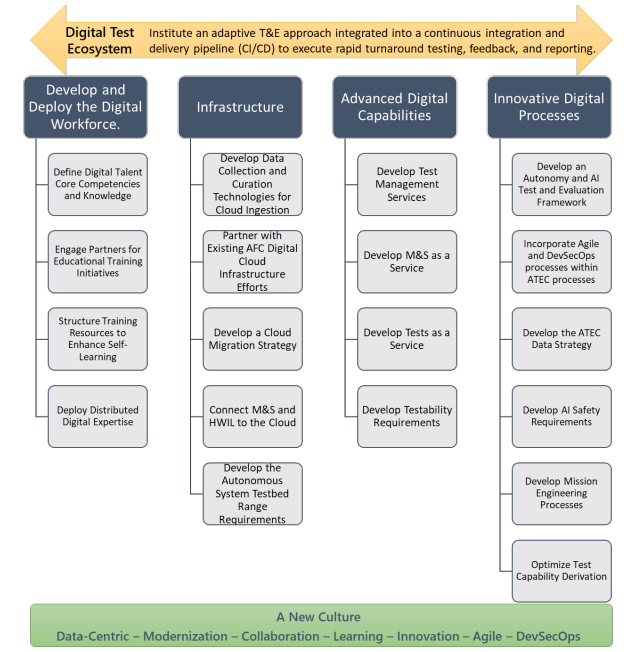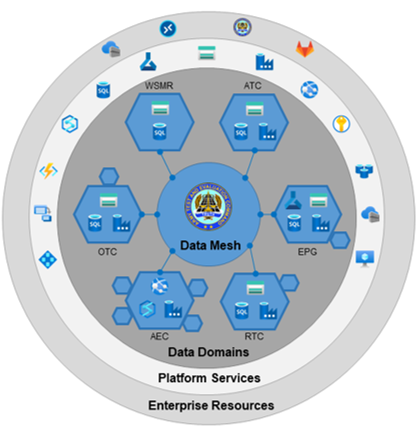
This project focused on cloud modernization efforts to digitally transform the Army Test & Evaluation Center (ATEC). For decades ATEC has been focused on commodity expertise. Our test and evaluation center’s commodity alignment were a result of the DoD’s focus on platforms. There is a tremendous organizational and technical debt in ATEC centers that focus on these commodity specific T&E infrastructures and evaluation methodologies. We define debt to mean the implied cost of organizational or technical rework necessary to modernize our T&E capabilities. We are now moving towards more complex system of systems architectures that require democratized data reduction workloads and analytical services deployed at the edge and the cloud. Our need for change is paramount. We are faced with a revolutionary transformation that will rely more on networks, artificial intelligence, robotics, and data meshes. Our digital transformation starts with upskilling our people, being empowered with cloud infrastructure, developing advanced digital capabilities and employing innovative digital processes. The following figure decomposes these four pillars into strategic objectives.
For an in-depth overview of this strategic approach, see the following link: ATEC DX Strategy.
Over a two-year timeframe, we recruited several talented test engineers to be the organization’s innovators and conducted a series of edge and cloud pilots. These pilots included stitching sensor-to-shooter kill chains during Project Convergence, building edge and cloud data engineering pipelines for network observability, radio testing, autonomous vehicle systems, missile defense systems, and designing an enterprise data mesh cloud architecture. We then partnered with the Enterprise Cloud Management Agency to deploy the data mesh inside the cArmy cloud environment while working towards our authority to operate.
The environment we designed is an enterprise Azure cloud solution that will empower ATEC, its subordinate organizations, and their people with powerful edge and cloud computing technologies. I assembled a team of cloud engineers and end-users to design a cloud architecture while leveraging the Microsoft cloud-scale analytics framework and Azure landing zone accelerators.
The ATEC Data Mesh complies with the DoD Secure Cloud Computing Architecture functional requirements. The architecture consists of the data domain, data management, and data insights virtual networks.
The data domain’s purpose is to provide storage accounts, data engineering services, relational and non-relational data stores, and the Azure Machine Learning and Databricks services. Each subordinate test center will own a data domain virtual network to create data products with tailored data engineering pipelines.
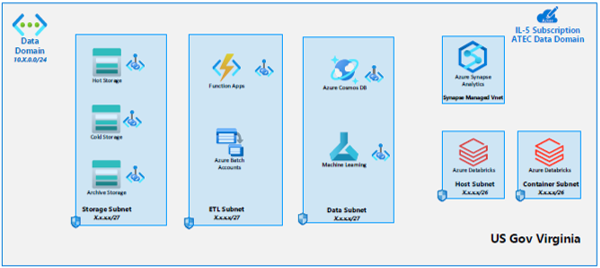
The purpose of the data management virtual network is to provide central data governance with an established common data reference model (CRM). The CRM standardizes ATEC naming conventions across the ATEC Enterprise, while simultaneously enabling schema and data design freedom at each test center.
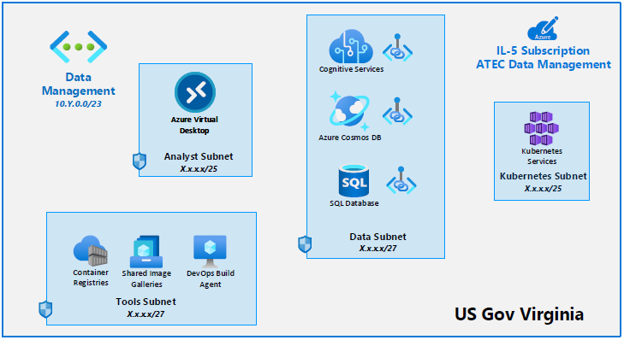 The insights virtual network’s purpose is to aggregate data products with the CRM and Army authoritative data sources to provide context for insight-based reporting to stakeholders.
The insights virtual network’s purpose is to aggregate data products with the CRM and Army authoritative data sources to provide context for insight-based reporting to stakeholders.
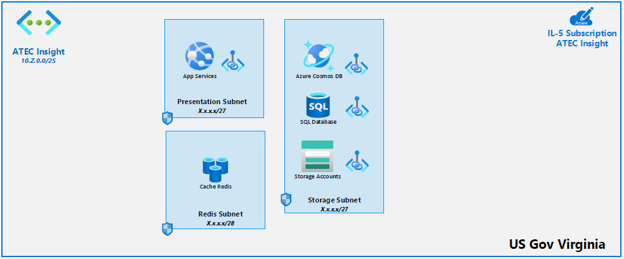 The outcome of the ATEC Data Mesh product is the cloud modernization roadmap for the 8,000-person ATEC Enterprise responsible for delivering quality insights to senior level decision makers for all Army Acquisition Programs. The ATEC Data Mesh serves as a blueprint for the rest of the Army and DoD to adopt similar Government cloud architectures to support data-centric analytics.
The outcome of the ATEC Data Mesh product is the cloud modernization roadmap for the 8,000-person ATEC Enterprise responsible for delivering quality insights to senior level decision makers for all Army Acquisition Programs. The ATEC Data Mesh serves as a blueprint for the rest of the Army and DoD to adopt similar Government cloud architectures to support data-centric analytics.
